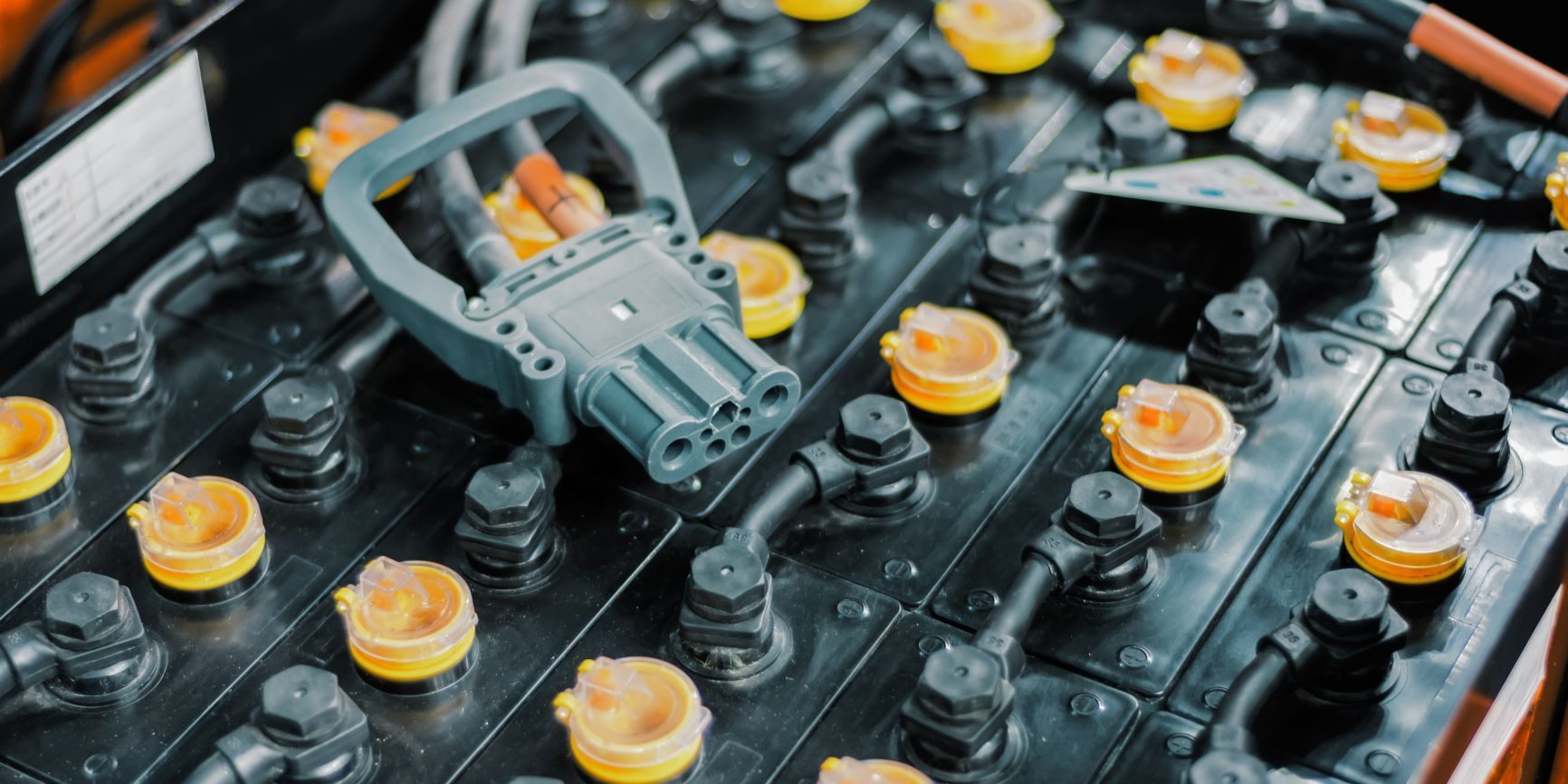Forklift batteries serve two key functions. While their first job is to provide a dedicated power source for the forklift, their second role is to provide appropriate mass and serve as a counterweight, aiding the forklift’s capacity to lift.
To get the most service life out of a forklift battery, there are three key considerations. The type of battery employed by a forklift, its usage and maintenance must all be taken into account. In the next sections, we’ll take a closer look at the different kinds of batteries used by forklifts and the best practices for maintenance and care.
Battery types
There are two distinct battery types used for forklifts, lithium-io and lead-acid. The technology involved in each differs greatly and as a result, they need different levels of care and maintenance.
Lead acid batteries were invented in 1859. They’re regarded as tried-and-tested solutions to power forklifts and use the same technology as traditional batteries in cars.
Lithium-ion batteries involved newer technology. First invented in 1991 these batteries can be recharged faster than other battery types. While lithium-ion batteries are more expensive upfront than lead acid options, they can be cost-effective. While the initial investment may seem high, many businesses save substantial sums using lithium-ion batteries due to the reduced running costs and less complex maintenance required to keep them running at their optimum.
Lithium-ion batteries tend to last somewhere between 2,000 to 3,000 cycles while lead acid batteries will last between 1,000 to 1,500 cycles. Lithium-ion type batteries need less maintenance than lead-acid batteries and their dedicated battery packs will usually include a dedicated battery regulator.
Best practices for battery usage
Forklift batteries must be kept away from extreme temperatures. Battery life is greatly reduced when temperatures reach 92 degrees, and when temperatures drop to 30 degrees or lower. Operations involving forklift work in harsh weather conditions should seek out a built-for-purpose battery that can cope.
Batteries should be recharged when they reach between 20 to 30 per cent. This is the point when a battery’s lifespan will deplete in continued use. Charging at this stage offers the ideal balance of performance, downtime and battery life. Batteries should always be given a full charge.
Maintenance of forklift batteries
Correct maintenance of forklift batteries is a crucial part of prolonging battery life. Batteries should be cleaned every month either using a battery cleaner or warm water. If cleaning is neglected it can cause long-term issues.
Lead-acid batteries require more maintenance and require regular water top-ups to function. When charged, the batteries’ fluid dissociates into hydrogen gas and oxygen lowering fluid levels. If it drops too far the lead plates can oxidise resulting in permanent battery damage.
Another issue is sulphation. As a battery discharges, crystals of sulphur form inside. When a battery is left at low charge for an extended period, the sulphur can cause damage and in some cases, render the battery useless. Special battery charge cycles must be completed to dissolve these crystals, but the process can be time-consuming.
Furthermore, the outside of the lead acid battery also requires regular monthly cleaning, to stop grime and corrosive substances from building up. Due to the hazardous materials involved in lead acid batteries, all maintenance operators must wear protective clothing including goggles and gloves.
Finally, using forklifts that run on lithium-ion batteries can drastically reduce maintenance operations for enterprises. Designed to keep maintenance and care requirements at a minimum, the design of lithium-ion batteries means that they never experience issues like sulphation or corrosion associated with lead acid options however they must still be cleaned regularly to ensure effective operation.
Contact us today to find out how we can help you with batteries for your forklift fleet.







